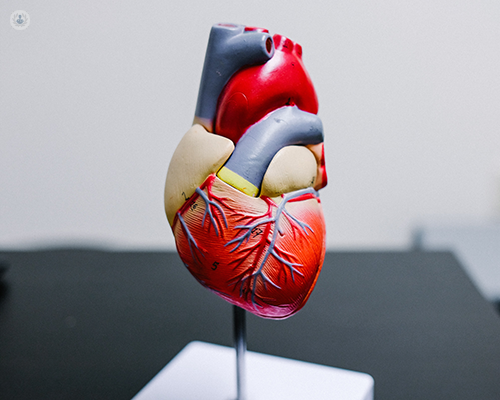Off-pump CABG and total arterial revascularisation explained
Escrito por:For patients living with severe coronary artery disease, surgical interventions such as coronary artery bypass grafting (CABG) can be lifesaving. Off-pump coronary artery bypass surgery (OPCAB) and total arterial revascularisation (TAR) are two advanced surgical techniques used in CABG to treat coronary artery disease.
Professor Mohamed Zeinah, renowned consultant cardiothoracic surgeon, offers an expert insight into the two.

What do OPCAB and TAR involve?
Off-pump coronary artery bypass surgery (OPCAB)
OPCAB is a type of CABG. Unlike traditional CABG, which involves stopping the heart and using a heart-lung machine, OPCAB is performed while the heart is still beating.
During OPCAB, you are given general anaesthesia. The chest is accessed through a median sternotomy, which involves making a vertical incision along the sternum.
Specialised instruments, such as tissue stabilisers and heart positioners, are used to stabilise the area of the heart where the bypass is being performed. These devices minimise the movement of the heart while allowing it to continue beating.
The surgeon then harvests the graft vessels, which typically include the internal mammary arteries, saphenous vein, or radial arteries. The distal end of the graft is sutured to the coronary artery beyond the blockage, while the proximal end is attached to the aorta or another large artery, if needed.
Once the grafting is complete, the stabilisation devices are removed. The heart and grafts are checked for proper blood flow and function to ensure the success of the procedure. Finally, the chest is closed, and you are taken to the intensive care unit for recovery.
Total arterial revascularisation (TAR)
TAR is a surgical approach used in CABG to bypass blocked coronary arteries. Unlike traditional CABG, which often uses a combination of arterial and venous grafts (typically the saphenous vein from the leg), TAR exclusively utilises arterial grafts for the bypasses.
During TAR, you are also administered general anaesthesia, and the chest is opened through a median sternotomy. This involves making a vertical incision along the sternum to access the heart.
The left and right internal mammary arteries are the most commonly used arterial grafts. Other potential arterial grafts include the radial artery from the arm and the gastroepiploic artery from the abdomen. These harvested arterial grafts are then prepared for attachment.
Using techniques that may include OPCAB methods, the grafts are attached to the coronary arteries needing revascularisation. The distal ends of the arterial grafts are sutured to the target coronary arteries beyond the blockages, while the proximal ends are typically left in situ for the internal mammary arteries or attached to the aorta for other arteries.
Once the grafts are in place, they are checked for proper blood flow to ensure the procedure's success. Finally, the chest is closed, and you are transferred to the intensive care unit for recovery.
Can TAR be performed using off-pump techniques?
Yes, it can. When combining OPCAB and TAR, the surgery involves performing the bypasses on a beating heart using only arterial grafts. This combination reduces the complications associated with the use of the heart-lung machine and improves long-term outcomes due to the durability of arterial grafts.
What should I expect in terms of lifestyle changes after OPCAB and TAR?
Undergoing OPCAB and TAR is a significant medical procedure. Post-surgery, you are advised to:
- Adopt a heart-healthy diet: Eat a heart-healthy diet that is low in saturated fats, cholesterol, and sodium. Focus instead on fruits, vegetables, whole grains, lean proteins, and healthy fats. Additionally, practising portion control by eating smaller, balanced meals can help maintain a healthy weight.
- Practise regular exercise: Engage in regular aerobic exercise, such as walking, cycling, or swimming, for at least 150 minutes per week, and include moderate strength training exercises a couple of times a week.
- Adhere to your medication: Take all medications as prescribed to manage blood pressure, cholesterol, and other conditions. Additionally, it’s important to attend regular check-ups with your surgeon to monitor heart health and adjust treatments as necessary.
How successful are OPCAB and TAR in preventing future cardiac events?
By enhancing blood flow to the heart muscle, OPCAB and TAR lower the risk of future heart attacks. Enhanced blood flow helps prevent further damage to the heart and lowers the risk of subsequent cardiovascular events.
Additionally, the arterial grafts used in TAR exhibit superior long-term patency compared to vein grafts. This leads to more durable revascularisation, ensuring that blood flow to the heart is maintained effectively over time.
Many patients report significant improvements in their symptoms and overall health following these procedures. Their positive outcomes and enhanced wellbeing underscore the effectiveness of OPCAB and TAR in treating coronary artery disease.
If you would like to schedule an appointment with Professor Mohamed Zeinah, head on over to his Top Doctors profile today


